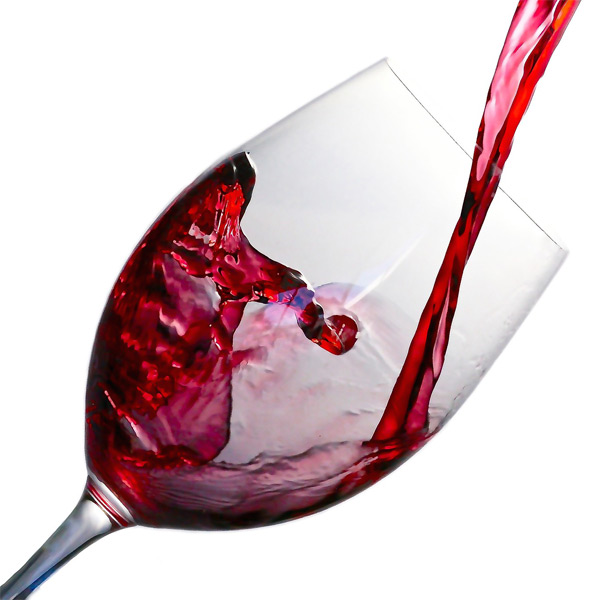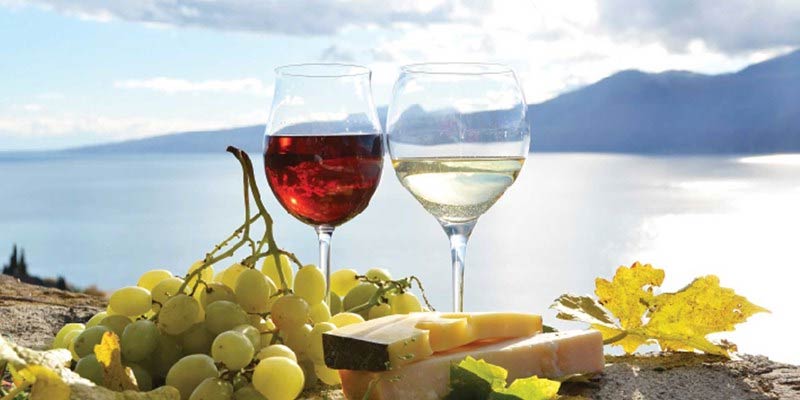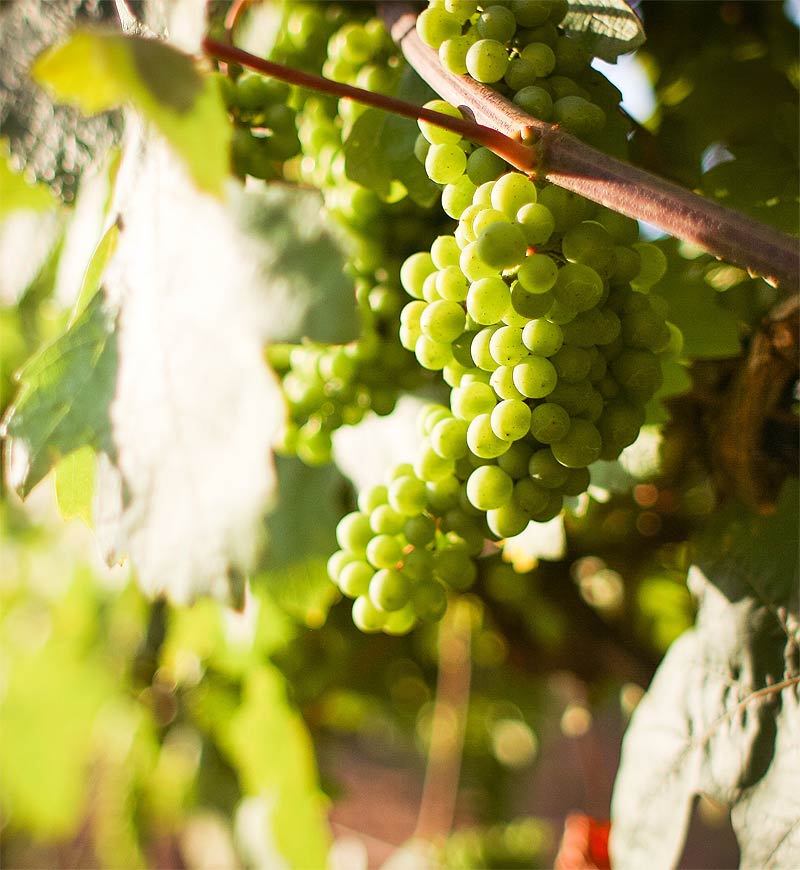
Wine is an integral part of the Greek legacy, customs and traditions, as well as nutrition. From 7000-6500 BC have been found the first elements that prove the use of grapes for the wine production. They come from Macedonia, from the land of the ancient Philippi, while many of the varieties we use today are likely to come from those which have been used by the ancient Greeks.
The commerce of Greek wines spread throughout the Mediterranean to the Iberian peninsula and the Black Sea and was one of the most important economic activities. In several cities there were special laws to ensure the quality of the wine. The residents of those cities blessed the god Apollo as their prostate.
Ancient Greeks were the ones who developed the art of winemaking, wine cultivation and wine trading at a high level and managed to raise wine from a simple drink to a global culture.
During antiquity there were many kinds of wine: white, red, rosé.
There are records for all the types of cultivation, starting from simple wines to the finest varieties. They were famous vineyards in many towns such as Naxos, Thasos, Lesvos and Chios.
Secondary wine was produced from water and must, mixed with sediments, which the villagers kept for their personal use. Sometimes the wine became sweeter with honey, and could be used for medicinal purposes if mixed with thyme, cinnamon and other herbs.
Wine was a daily basic ingredient in the diet of Ancient Greeks and was one of the main foods as it was part of the breakfast but also of the other meals. Hippocrates, the father of medicine describes the types and amount of wine that normal people need to drink and gives us, on his scripts, the healing properties for all kinds of wine that is consumed by humans.
Nowadays, Harvard Medical School studies have concluded that moderate wine consumption reduces the possibility of coronary artery disease by 20 to 40 percent because it increases HDL (good cholesterol) levels and reduces LDL (bad cholesterol). Its action is due to the strong antioxidant factors of red wine, and particularly to the phenols that absorbed by the bloodstream. These elements are found on the skin of the grapes.


An important element of the quality of the Greek wines is the proper utilization of the Greek vineyard, which combined with the geography of the country and the sweet Mediterranean climate, favored the creation of the small independent vineyards.
One of the main features of the Greek vineyard is the large number of micro-regions with a particular ecosystem (land – climate – vine variety) where wines of a qualitative character are produced.
In addition, the moderate fertility soils, often barren, give a good quality fruit. More specific, the vineyards are located in privileged locations, in coastal areas, on islands, on mountain slopes reaching altitudes of up to 1000 m. The vineyards are very few. Under these conditions, are cultivated the grape varieties. There are indigenous Greek varieties, many of which refer us to ancient Greece. There are totally over 300 precious native varieties in Greece and produce a whole range of wines. Each of them having its own personality and its highly formal character, “carries” the full weight of the geological history of its production site.
The beautiful and sought-after red grape of Nemea. Its wines, with a beautiful purple “costume”, are characterized by a rich, velvety taste.
White grape with floral fragrance which is cultivated in Santorini and Aegean islands.
White grape widespread in the islands of the southern Aegean and Halkidiki. Its wines are presented with a delicate lemon aroma and richness of flavor.
Go to Mantilargia
The dominant grape of Santorini that has successfully migrated to Chalkidiki, Epanomi, Drama, Paggaio and Peloponnese. White, retains high enough acidity even at its full maturity.
White grapes (Santameriana, White Volitsa, Mygdali, Brenna) which are grown in the Peloponnese.
Red grape from Zakynthos and across the western Peloponnese.
Red variety, cultivated almost exclusively in Lefkada. It gives brightly colored wines.
Old Cretan variety. A white grape that when is growning with care gives pleasing wines with floral and fruity aromas.
A red vine variety that is found in the area of Ioannina.
One of the oldest indigenous white varieties of Crete, stands out for its aroma that reminds laurel.
At the end of the 19th century, the grapes that was cultivated in Santorini were over 50. Today, unfortunately, there are 5 that can be considered important. Among them, Katsano.
Red Cretan Grape. Its wines are high, soft and spicy in taste. Usually she is vinified together with Mantilaria.
Red grape cultivated exclusively in Rapsani and involved in the composition of its wine.
One of the rare varieties of Laconia with Monemvasia, Petroulianos and Thrapsa. Its trademark is the persistent aroma that refers to sweet quince.
Grape with remarkable fruit and vivid acidity, cultivated in the northern Peloponnese and the Ionian islands.
Red grape, autochthon of Lemnos, with roots until ancient age. The Lemnos vineyard, which its wines are mentioned by Polideukis, today, apart from the island, are cultivated in Northern Greece.
Cretan grape from the oldest Greek varieties. Is a high quality variety and is highlights its quality character when it matures a lot.
Fine white variety that gives us rich and aromatic wines.
Red Aegean variety. It is usually vinified along with other grapes that reduce its rudimentary character and adds finer notes to its pure earth aromas (with Monemvasia in Paros and Kotsifali in Crete).
Go to Mantilaria
The famous aromatic grape grown in the vineyards of Patras and Kefalonia. The largest quantity is used for the production of homonymous high and aged red sweet wine.
The red suggestion of Santorini. One of the many unknown grapes of the Cycladic vineyard, which the efforts of winemakers managed to save from extinction. Wine with character and intensity, as well as everything from this favorite island.
The family is big. With this name we can find many grapes in the Peloponnese, Epirus, Macedonia and Central Greece. Their common feature is the black color of their bark. Variety of tannins that respond to aging in the barrel.
White grape that is culcivated in Paros.
A large and famous family of grapes grown with a variety of names in almost all wine-growing countries. Big is also the variety of wines that give us, from aged sweets until fresh , fruity and sparkling wines. All of them stand out for their impressing aroma.
A red aromatic variety that we find in Kozani.
It is grown on the plateau of Mantineia and in the southern Peloponnese, for the production of white wines with a strong and easily recognizable aroma. With calming notes that in their purest expression remind us of rose, mint and lemon.
Red variety found in the area of Ioannina.
Red grape cultivated exclusively in Goumenissa. It participates in the varietal composition of local wine offering color, fruity flavor, alcoholic strength and is reducing its acidity.
White and continental, has a remarkable potential for the production of fresh dry and sparkling wine.
The fine red variety of northern Greece. Well acclimated to continental climates, it is cultivated in more areas than any other variety in Greece. Its grapes have a strong acid taste, even when mature.
White grape from the most elegant Greek varieties. Cultivated in Kefalonia and Sterea Hellas. Its wines are fresh and with aroma from lemon.
The most widespread vegetation of the Greek vineyard. It is grown in Attica and throughout Central Greece. In combine with Roditis, they are the main products used in the production of retsina.
Grape with pink bark and acidity. It is cultivated throughout the Peloponnese, especially in Corinthia, Achaia, Ilia and sporadically in Attica and Euboea.
Red grape which cultivated exclusively in Rapsani and involved in the composition of its wine.



